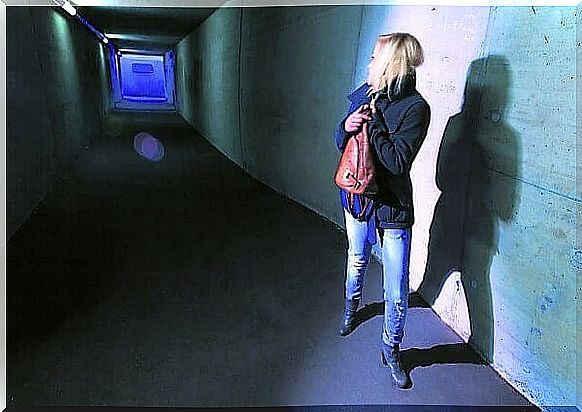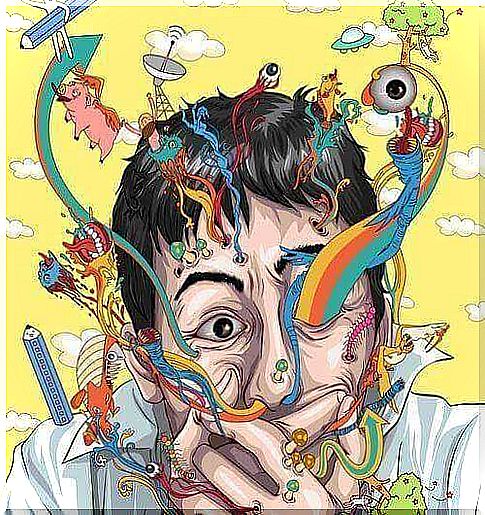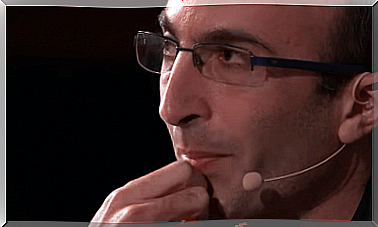Paranoid Schizophrenia: Definition, Causes And Treatment

You’ve probably heard it said more than once that someone “is paranoid” or “is paranoid.” It is not uncommon to use the term “paranoid” to designate a person who believes they are being persecuted, who thinks someone wants to harm them, who is making fun of them, or who are against them. However, academically speaking, the term paranoid or paranoid is more than that. In this article, we’re going to talk about a subtype of psychosis, paranoid schizophrenia.
Historically, the term “psychotic” has been defined in several different ways, although none of them has been universally accepted. We understand the term “psychotic” as a person with a specific set of symptoms that can be grouped into two groups: positive symptoms and negative symptoms. Let’s take a closer look at each one.
Schizophrenia, a serious mental illness
The DSM-IV-TR (Diagnostic and Statistical Manual of Mental Disorders) defines schizophrenia as a condition that persists for at least 6 months and includes at least 1 month of active-phase symptoms. These symptoms are as follows: delusional ideas, hallucinations, disorganized language, seriously disorganized or catatonic behavior, and negative symptoms.

Positive symptoms appear to reflect an excess or distortion of normal functions, while negative symptoms reflect a decrease or loss of normal functions. Positive symptoms include distortions of inferential thinking (commonly called delusional ideas, including the “paranoid” ideas we talked about earlier). They also include hallucinations, disorganized language and seriously disorganized behavior.
In turn, negative symptoms comprise restrictions in the scope and intensity of emotional expression (affective smoothing), the flow and productivity of thought and language (alology), and the onset of goal-directed behavior (abulia).
The delusional ideas
Delusional ideas are erroneous beliefs that usually imply a misinterpretation of experiences or perceptions. Your content can include various themes (for example, persecution, self-referral, somatic, religious, or grandiose). Delusional ideas of persecution are the most frequent.
The person who suffers from delusional persecution ideas (paranoid or paranoid ideas) thinks they are being harassed, followed, tricked, spied upon, or ridiculed. Delusional self-referential ideas are also common: the person thinks that certain gestures, comments, passages from books, newspapers, music or other elements of the environment around him are especially directed towards him.
Although delusional weird ideas are considered typical of schizophrenia, “oddity” can be difficult to judge, especially in different cultures. Delusional ideas are classified as strange if they are clearly improbable and incomprehensible and if they are not the result of ordinary life experiences (for example, thinking that someone has implanted a microchip under your skin to “spy” on your every move).
Another example of a strange delusional idea is the belief that a strange being has stolen your internal organs and replaced them with someone else’s without leaving any wounds or scars. Delusional ideas that express a loss of control over the mind or body are generally considered strange.
Delusional beliefs can cause social, marital or professional problems. People with delusional ideas may be able to understand other people’s arguments to classify their ideas as irrational. However, they are unable to do this themselves. Many of these people can develop an irritated type of affection. At the same time, this irritability can be understood as a reaction to your delusional beliefs.

Psychosis or paranoid schizophrenia
The diagnosis of a particular schizophrenia subtype is based on the patient’s clinical condition. Thus, there are different types or subtypes of schizophrenia according to the DSM-IV-TR:
- Paranoid.
- Unorganized.
- Catatonic.
- Undifferentiated.
- Residual.
As we said earlier, in this article we are going to focus on paranoid schizophrenia.
Characteristics of paranoid-type schizophrenia
The hallmark of paranoid schizophrenia is the presence of clearly delusional ideas or auditory hallucinations. However, the person does not have deficiencies during thought or affectivity. Fundamentally, delusional ideas are of persecution, greatness or both, but delusional ideas with other themes can also occur (for example, jealousy, religiosity or somatization).
The delusional ideas in paranoid schizophrenia can be many, but they are usually organized around a coherent theme. It is also common for hallucinations to be related to the content of the delusional theme.
Symptoms associated with paranoid schizophrenia
Associated symptoms include anxiety, anger, withdrawal, and a tendency to argue. The person may have an air of superiority and condescension. It can also show arrogance, minuteness, lack of naturalness or extreme vehemence in personal relationships.
Persecutory themes can predispose a person to suicidal behavior. Furthermore, the combination of delusional ideas of persecution and grandeur with angry reactions can predispose a person to violence (although not necessarily so, it depends on the case).

In this sense, spontaneous or unexpected aggressions are uncommon. Aggression is more frequent in young men and in individuals with a history of violence, lack of therapeutic observation, substance abuse and impulsiveness. In any case, we must be aware that most people with schizophrenia are not aggressive. In addition, they are victims of aggression or abuse more often than people who do not have schizophrenia. More than potential aggressors, they are potential victims.
The onset of paranoid psychosis tends to be later than in other types of schizophrenia. Furthermore, the features that differentiate it can be more stable over time. Some data suggest that the prognosis for the paranoid type may be considerably better than for other types of schizophrenia. In general, these people continue to be able to lead lives with a high degree of autonomy.
What are the causes?
The causes are still not completely clear and there is controversy on this subject. Anyway, some risk and prognostic factors were established. They are as follows:
- Environmental factors: the season of birth was associated with the incidence of schizophrenia. For example, in late winter/early spring in some regions. The incidence of schizophrenia and related disorders is also higher in children who grow up in an urban setting and in some minority ethnic groups.
- Genetic factors: there is an important contribution of genetic factors when determining the risk of a person having schizophrenia. The predisposition confers a range of risk alleles, common and rare. These alleles are also associated with other mental disorders such as bipolar disorder, depression and autism spectrum disorder.
- Physiological factors: complications of pregnancy and childbirth with hypoxia (lack of oxygen) and older parents are associated with a higher risk of schizophrenia for the developing fetus. In addition, other adverse prenatal and perinatal situations such as stress, infection, malnutrition, maternal diabetes and other clinical pathologies are also associated with schizophrenia. However, the vast majority of children who have these risk factors do not develop schizophrenia.

Treatment of paranoid psychosis
Chronic paranoid psychosis is treated with a combination of medications, mainly neuroleptics, antipsychotics, anxiolytics and support through psychotherapy. However, the treatment is rarely carried out correctly because the patient is not aware of the disease: he feels bad, but he thinks it is because of what happens outside him, not in his own head. Pharmacological treatments are lifelong. In severe cases, hospitalization should be considered.
As we have seen, paranoid-type schizophrenia has features that differentiate it from other subtypes. Delusional ideas of persecution, grandeur, or both are common. However, the reasoning ability is kept more or less intact, which gives a high degree of autonomy to these people.
Bibliography:
- American Psychiatry Association (2014). Diagnostic and statistical manual of mental disorders (DSM-5), 5th Ed. Madrid: Editorial Médica Panamericana.
- Chinchilla Moreno A. Las schizophrenias . Barcelona: Elsevier Masson; 2007.









